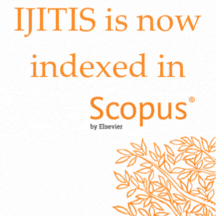Evaluating Semi-Adaptive Signal Control Systems for Traffic Management: A Case Study of Key Intersections in Tirana
DOI:
https://doi.org/10.15157/ijitis.2025.8.4.1021-1038Keywords:
Traffic Congestion, Intersection Performance, Semi-Adaptive Traffic Signal Control, Traffic Flows, PTV VissimAbstract
Traffic is an integral part of urban life, playing a significant role in how we move and manage our daily activities. Every day, citizens of Tirana face severe traffic congestion, especially during peak hours, when the city's roads are filled with vehicles, and long waiting times become a common phenomenon. This has caused serious problems for the city, including long delays, traffic congestion, and detrimental effects on quality of life and the environment. To address these challenges, it is crucial to explore and implement advanced traffic management systems. In this context, signal control methods, such as semi-adaptive and fully adaptive systems, offer an excellent opportunity to improve traffic flow and reduce delays and queues in the city. This paper assesses the effectiveness of a semi-adaptive traffic signal control system at major intersections in Tirana, utilising PTV Vissim simulation software. Results show a significant reduction in traffic delays and queue lengths, particularly during peak hours. The second part of this study will assess the performance improvements of this approach in terms of reduced congestion, enhanced traffic management, and overall network efficiency. The semi-adaptive system's dynamic adjustment of signal phases based on real-time data leads to improved traffic flow and reduced congestion, providing a cost-effective solution for urban traffic management. The findings suggest that semi-adaptive systems can optimize traffic flow, particularly in growing cities that face congestion.
Downloads
Published
How to Cite
Issue
Section
License
Copyright (c) 2025 Veranda Syla, Algenti Lala

This work is licensed under a Creative Commons Attribution 4.0 International License.








